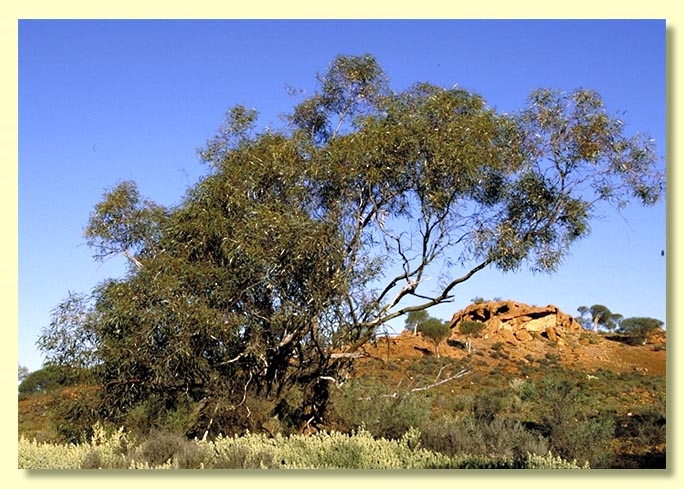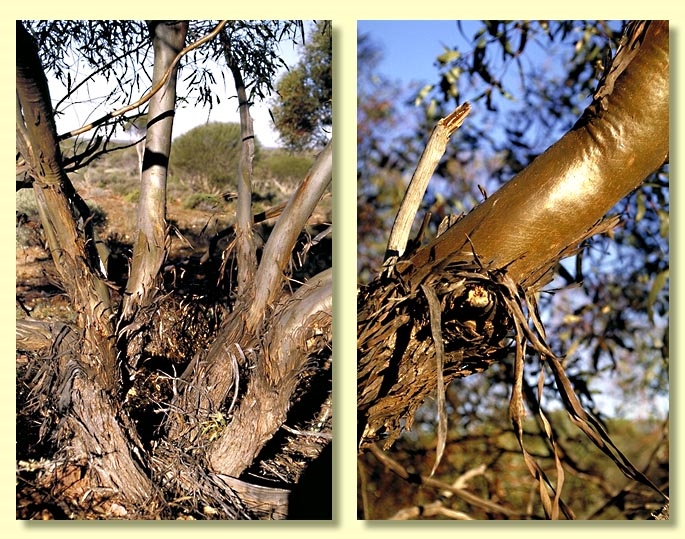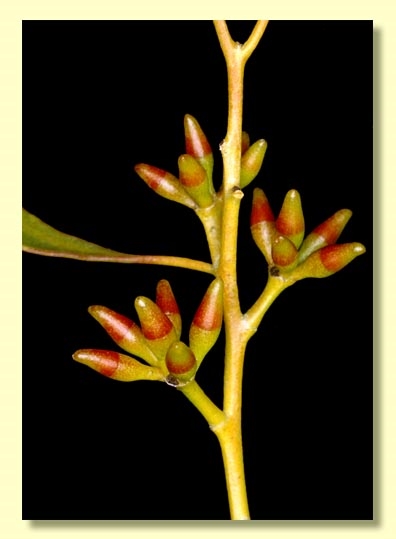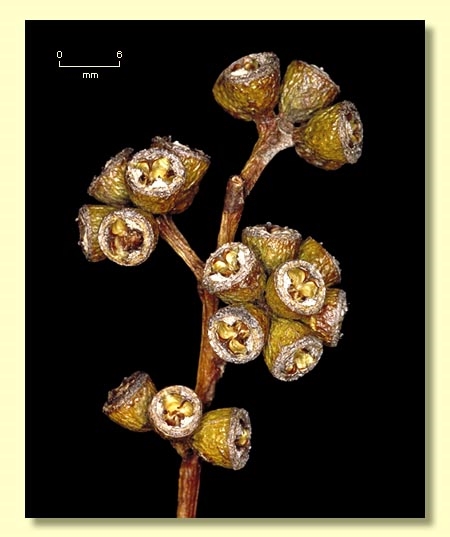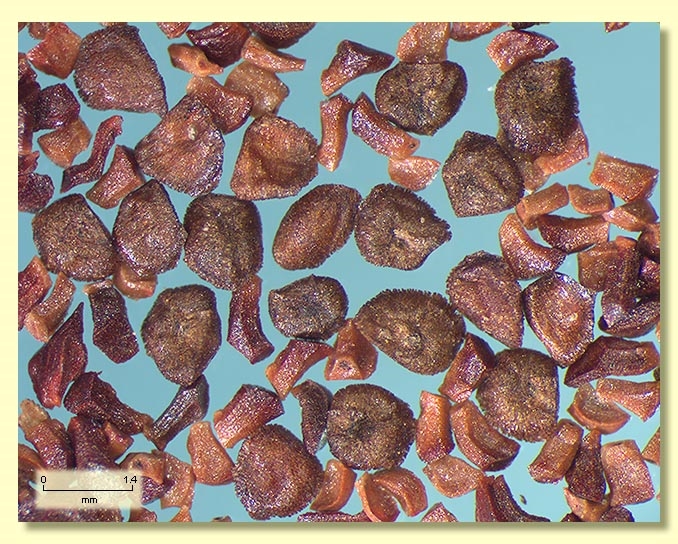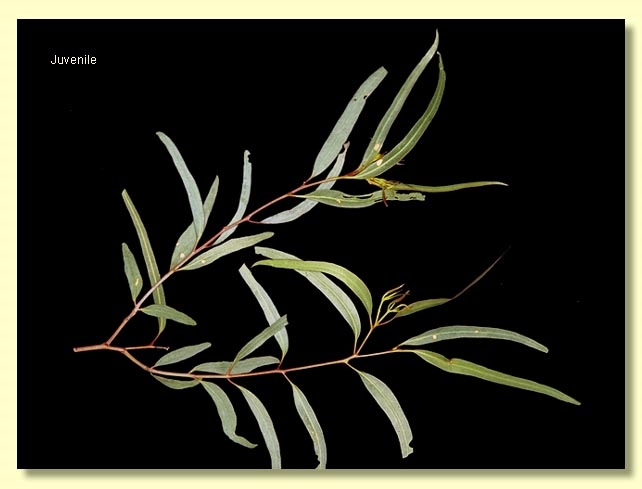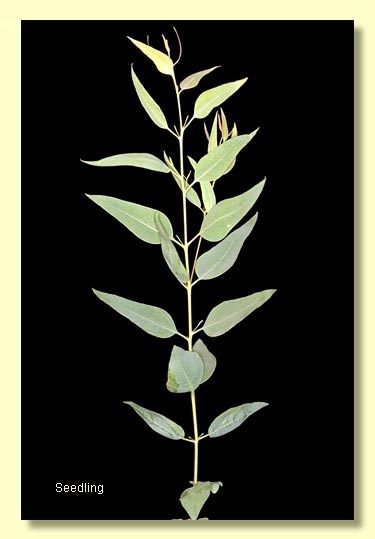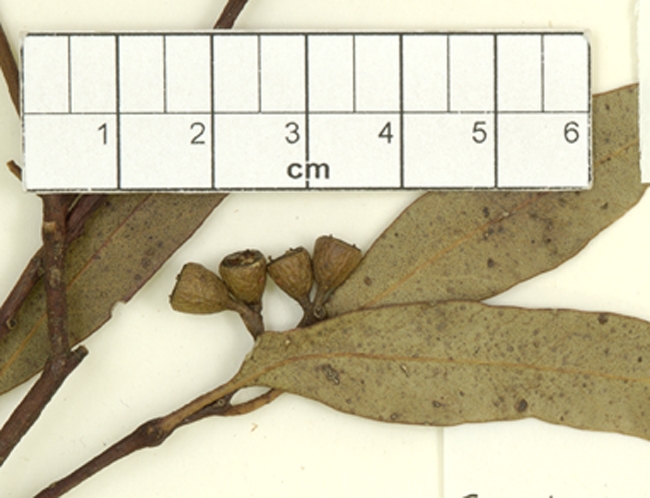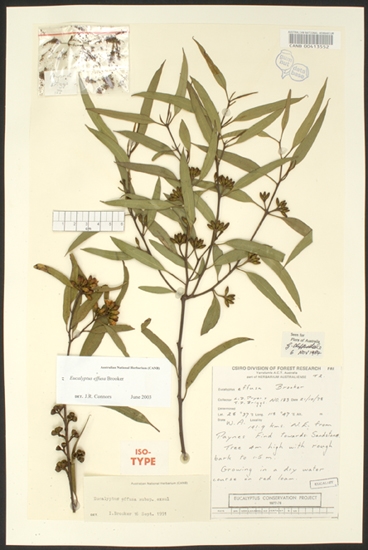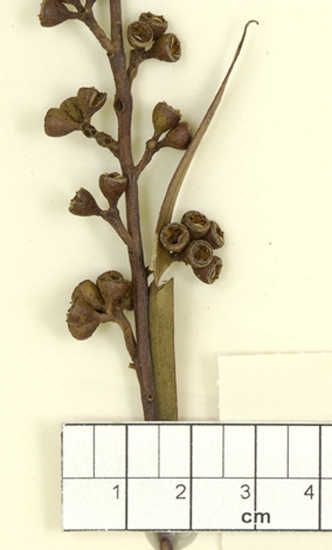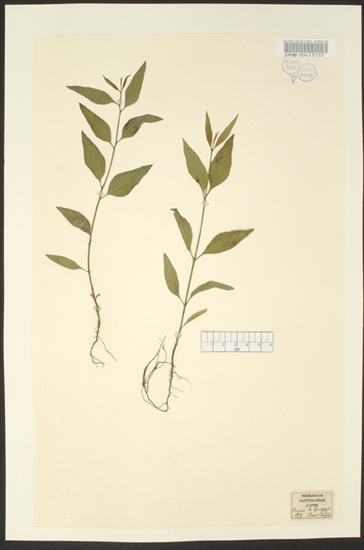Euclid - Online edition
Eucalyptus effusa
Eucalyptus | Symphyomyrtus | Bisectae | Glandulosae | Contortae
T: 112 km E of Norseman, W.A., 32°02'S, 122°57'E, 12 Mar. 1967, G.M.Chippendale 157; holo: CANB; iso: MEL, NSW, PERTH.
T: 141.9 km NE of Paynes Find towards Sandstone (28°37'S, 118°47'E), 21 Oct. 1978, L.D.Pryor 133 & J.D.Briggs; holo: NSW; iso: CANB.
Bark rough, thin, grey, consisting of persistent ribbons on lower stems sometimes extending to branches ca 5–10 cm diameter, smooth above, shiny grey-brown over red-brown or coppery.
Branchlets non-glaucous or glaucous; pith with oil glands.
Juvenile growth (coppice or field seedlings to 50 cm): stems rounded or squared in cross-section, glaucous or non-glaucous; juvenile leaves always petiolate, opposite for up to 5 nodes then alternate, lower leaves broadly lanceolate but soon becoming narrowly lanceolate-falcate, 5–11.5 cm long, (0.5)0.7–4(5) cm wide, green to grey-green or slightly glaucous.
Adult leaves alternate, petioles 0.5–1.8 cm long; blade linear to narrowly lanceolate, often curved, 5–12.5 cm long, 0.5–2 cm wide, base tapering to petiole, margin entire, apex pointed, grey-green but maturing green and usually glossy, side-veins acute, reticulation sparse, intramarginal vein close to margin, oil glands island, irregularly-shaped.
Inflorescence axillary unbranched, peduncles 0.4–1.5 cm long, buds 7 per umbel, pedicels 0.1–0.3 cm long. Mature buds ovoid to almost cylindrical (0.6–0.8 cm long, 0.3–0.5 cm wide), scar present, operculum obtusely to acutely conical, stamens inflexed to varying degrees, anthers narrowly oblong, versatile, sub-basifixed, dehiscing by longitudinal slits, style long and straight, stigma blunt to rounded, locules 3 or 4, the placentae each with 4 vertical rows of ovules (or ?6 rows-solitary ovules may occur laterally on each side of placenta). Flowers white.
Fruit pedicellate or less commonly sessile (pedicels 0–0.2 cm long), cupular to obconical, 0.4–0.6 cm long, 0.4–0.7 cm wide, disc level to descending, valves 3 or 4, exserted or at rim level.
Seeds brown, 1–2 mm long, ovoid or flattened-ovoid, dorsal surface closely and narrowly fissured at least near the margin, hilum ventral. (Seedcoat often referred to as being honey-combed.)
Cultivated seedlings (measured at ca node 10): cotyledons Y-shaped (bisected); stems rounded in cross-section, green or glaucous; leaves always petiolate, opposite for 4 to 9 nodes then alternate, ovate to lanceolate, 6–11 cm long, 1.5–4 cm wide, dull, green.
Flowering has been recorded in January, April, October and November.
A low mallee or short tree, endemic to Western Australia. It has a disjunct distribution near the Fraser Range between Norseman and Balladonia, to the north near Erayinia Hill and Cardunia Rock near the transcontinental railway, Morton Craig Range and also south-west of Sandstone. The bark is usually held as thick loose ribbons on the lower stems with green to coppery smooth bark above. The adult leaves are slightly glossy, green to dark green and buds are in sevens.
Eucalyptus effusa belongs in Eucalyptus subgenus Symphyomyrtus section Bisectae subsection Glandulosae because the buds have two opercula, the cotyledons are bisected and the branchlets have numerous oil glands in the pith.
Within this sub-group E. effusa belongs to a small well-known group, the gimlets (series Contortae), notable for the slender, fluted, twisted, shiny, colourful trunks. The gimlets are further recognised by very irregularly shaped island oil glands in the leaves and seed with irregularly and deeply fissured seed-coats. The eight species in series Contortae are E. campaspe, E. creta, E. diptera, E. effusa, E. ravida, E. salubris, E. terebra and E. tortilis. All have buds in clusters of 7 except for E. creta and E. diptera which have buds in 3s.
Eucalyptus effusa can be distinguished from all other seven-budded gimlets by the heavy-stemmed mallee habit with coarse ribbony persistent bark and the relatively small buds and fruit. A population with glaucescent branchlets and less pointy (more blunt) opercula, occurs near Younami and has been described as E. effusa subsp. exsul. Plants with glaucous branchlets are occasionally seen along with non-glaucous plants, e.g. near Cardunia Rock, whilst the operculum character is variable, assessment is subjective and dependent on bud maturity. The subspecies is not recognised in EUCLID.

